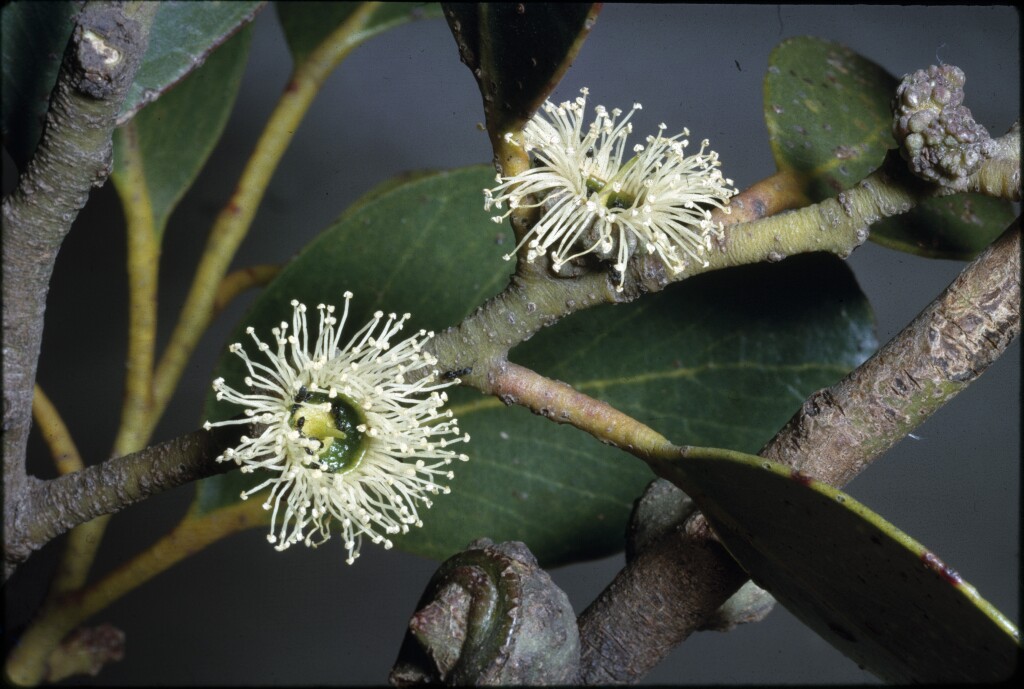Eucalyptus serraensis
P.Ladiges & Whiffin Grampians StringybarkSmall tree or mallee; bark flaky on part of trunk or stems, smooth above. Juvenile leaves sessile, opposite, discolorous and scabrous for few pairs, then alternate, shortly petiolate, concolorous, ovate to obovate, often emarginate, to 6.5 cm long, 4.5 cm wide, glabrous, glossy, thick and green; adult leaves petiolate, alternate, ovate to broadly lanceolate, thick, 6–11 cm long, 3–5 cm wide, concolorous, glossy, green; reticulation sparse to obscure, with often obscure, irregular, island oil glands. Inflorescences axillary, unbranched; peduncles 0.1–0.2 cm long, 3- or 7-flowered; buds sessile, clavate, very warty, to 1 cm long, 1 cm diam., no scar (single operculum); operculum hemispherical; stamens irregularly flexed; anthers dorsifixed, reniform; ovules in 2 vertical rows; flowers white. Fruit sessile, hemispherical, to 1.7 cm long, 2 cm diam.; disc ascending; valves 4 or 5, exserted; seed dark brown to almost black, glossy, smooth, pyramidal but distorted by one curved face, hilum terminal. Flowers Apr.–Nov.
Wim, CVU, GGr, DunT, HSF. Victorian endemic. Only on Serra Range and Wonderland Range in the Grampians.
Part of the taxon formerly known as E. alpina, the type specimen of which is considered to be E. baxteri. On exposed sites the crown of E. serraensis may have adult and subadult (ovate to obovate) leaves. Distinguished from E. verrucata by smaller buds and fruit.
Brooker, M.I.H.; Slee, A.V. (1996). Eucalyptus. In: Walsh, N.G.; Entwisle, T.J., Flora of Victoria Vol. 3, Dicotyledons Winteraceae to Myrtaceae, pp. 946–1009. Inkata Press, Melbourne.
 Spinning
Spinning
